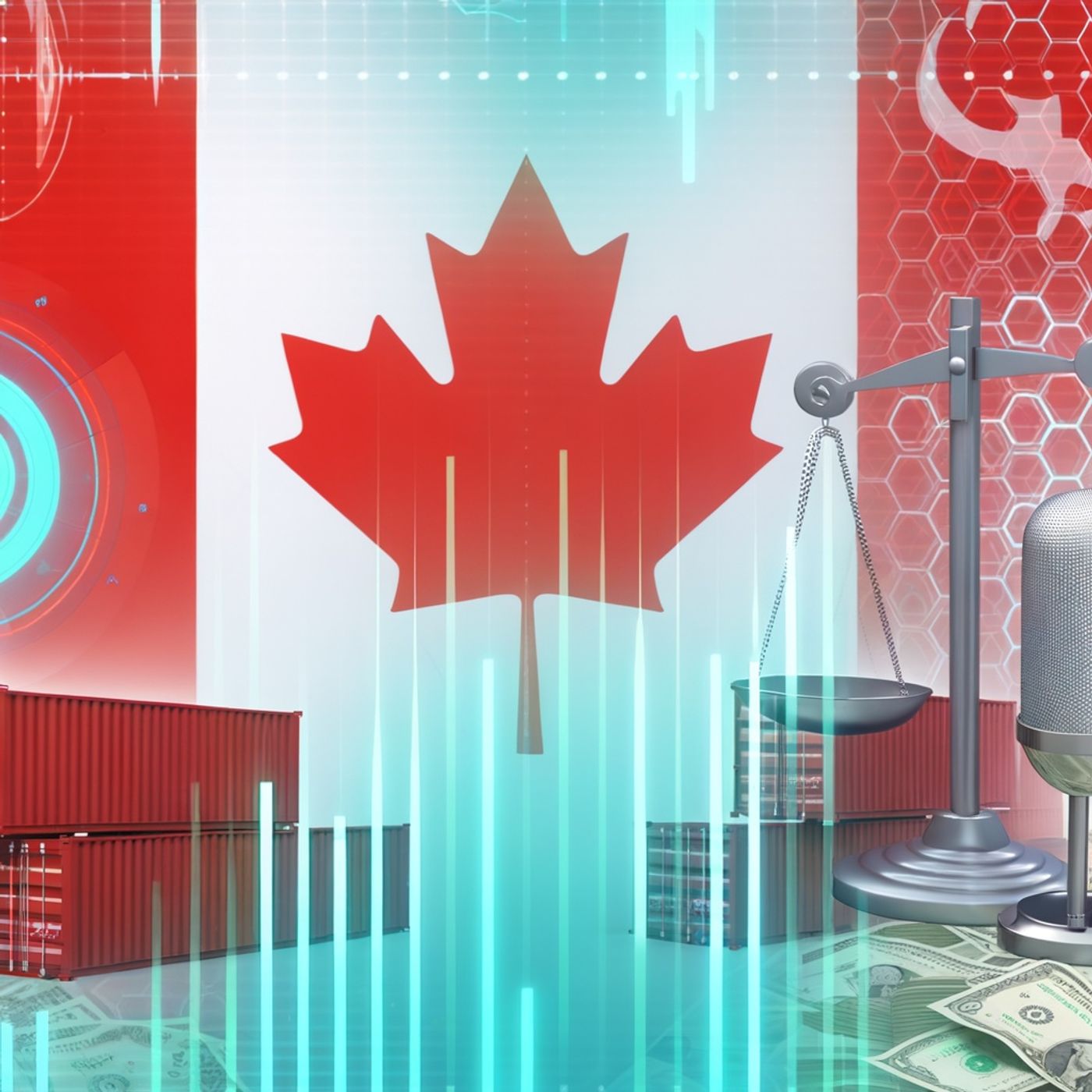Canada Removes Most Retaliatory Tariffs, Signaling Economic Détente with US and Potential Inflation Relief in 2025
Update: 2025-08-24
Description
Listeners, fresh headlines from the Canada-U.S. trade front show a dramatic turn in 2025. As announced by Prime Minister Mark Carney, Canada has officially removed nearly all of its retaliatory tariffs on American goods this summer, citing a renewed commitment to the core Canada-U.S.-Mexico Agreement, or CUSMA. This move covers over 85 percent of cross-border trade and marks a decisive stabilization in economic relations between the two countries.
According to CTV National News, Canadian government officials described this de-escalation as a lifeline for sectors like automotive and steel, which have faced mounting pressure in recent years. With the U.S. maintaining some sector-specific 50 percent tariffs on Canadian steel and aluminum imports, these industries are still navigating a tightrope. However, most U.S.-bound Canadian exports now benefit from tariff-free treatment under CUSMA, providing much-needed relief for automotive suppliers such as Magna International and energy exporters who largely comply with the agreement.
The U.S. side, under President Trump, responded with a measured welcome. In a statement picked up by OPB and multiple market outlets, Trump told Canadian leaders, “We want to be very good to Canada,” but also confirmed that the average U.S. tariff rate on Canadian goods stands at 5.6 percent, the lowest among all U.S. trading partners. While the majority of Canadian goods flow south without tariff barriers, new 50 percent tariffs on copper and other metals as well as 10 to 25 percent tariffs on selected energy exports were imposed at the start of August. The Trump administration has also signaled intentions to review and possibly renegotiate parts of USMCA in 2026, injecting a sense of uncertainty for Canadian exporters in future planning.
AInvest reports that the Bank of Canada views the elimination of most retaliatory tariffs as a powerful lever to restrain inflation. With lower trade friction, the bank is now positioned to cut interest rates further, potentially reaching a neutral policy rate of 2.25 percent by early 2026. Historical examples suggest this kind of tariff relief can reduce inflation by as much as 75 percent within eighteen months, which could also boost equity and bond valuations, particularly in trade-exposed sectors.
Market data from VT Markets underscores that Canada’s decision has already strengthened the Canadian dollar. However, the mixed outlook on targeted U.S. trade actions, and increased options volatility, highlight that investors and businesses should remain alert to fresh negotiations and announcements—especially with the 2026 USMCA review on the horizon.
Thanks for tuning in to Canada Tariff News and Tracker. Don’t forget to subscribe to stay informed on every trade twist and tariff headline. This has been a quiet please production, for more check out quiet please dot ai.
For more check out https://www.quietperiodplease.com/
Avoid ths tariff fee's and check out these deals https://amzn.to/4iaM94Q
This content was created in partnership and with the help of Artificial Intelligence AI
According to CTV National News, Canadian government officials described this de-escalation as a lifeline for sectors like automotive and steel, which have faced mounting pressure in recent years. With the U.S. maintaining some sector-specific 50 percent tariffs on Canadian steel and aluminum imports, these industries are still navigating a tightrope. However, most U.S.-bound Canadian exports now benefit from tariff-free treatment under CUSMA, providing much-needed relief for automotive suppliers such as Magna International and energy exporters who largely comply with the agreement.
The U.S. side, under President Trump, responded with a measured welcome. In a statement picked up by OPB and multiple market outlets, Trump told Canadian leaders, “We want to be very good to Canada,” but also confirmed that the average U.S. tariff rate on Canadian goods stands at 5.6 percent, the lowest among all U.S. trading partners. While the majority of Canadian goods flow south without tariff barriers, new 50 percent tariffs on copper and other metals as well as 10 to 25 percent tariffs on selected energy exports were imposed at the start of August. The Trump administration has also signaled intentions to review and possibly renegotiate parts of USMCA in 2026, injecting a sense of uncertainty for Canadian exporters in future planning.
AInvest reports that the Bank of Canada views the elimination of most retaliatory tariffs as a powerful lever to restrain inflation. With lower trade friction, the bank is now positioned to cut interest rates further, potentially reaching a neutral policy rate of 2.25 percent by early 2026. Historical examples suggest this kind of tariff relief can reduce inflation by as much as 75 percent within eighteen months, which could also boost equity and bond valuations, particularly in trade-exposed sectors.
Market data from VT Markets underscores that Canada’s decision has already strengthened the Canadian dollar. However, the mixed outlook on targeted U.S. trade actions, and increased options volatility, highlight that investors and businesses should remain alert to fresh negotiations and announcements—especially with the 2026 USMCA review on the horizon.
Thanks for tuning in to Canada Tariff News and Tracker. Don’t forget to subscribe to stay informed on every trade twist and tariff headline. This has been a quiet please production, for more check out quiet please dot ai.
For more check out https://www.quietperiodplease.com/
Avoid ths tariff fee's and check out these deals https://amzn.to/4iaM94Q
This content was created in partnership and with the help of Artificial Intelligence AI
Comments
In Channel





